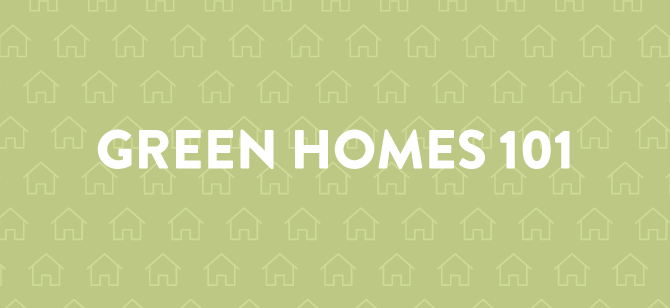Green Homes
7/20/2020

The green home defined
A green home uses less energy, water and natural resources, creates less waste and is healthier for the people living inside compared to a standard home. It’s as simple as that!
A home can be built green, or you can make it green later. A green makeover can happen all at once, or it can be a gradual process. But what it all comes down to is a new way of thinking—and a new way of living. From a more energy-efficient kitchen to a tree-filled backyard paradise, your home can be green top to bottom, front to back, inside and out. And it doesn’t matter whether you rent or own, live in an apartment or single-family home, or live in the city, the suburbs or the country.
Benefits of a green home
There are many very real benefits to living in a green home, and every day, more and more Americans are discovering those benefits. Green homes are healthier, more durable and more cost-effective.
| Average Predicted Energy Savings of LEED Homes |
|
Based on their average Home Energy Rating System (HERS) scores, homes certified under LEED for Homes since the program launched in January 2008 are predicted, on average, to have the potential for reduced energy usage compared with International Energy Conservation Code standards:
|
|
LEED Certified
|
LEED Silver
|
LEED Gold |
LEED Platinum |
|
~30%
|
~30%
|
48%
|
50-60%
|
That’s why owning or renting a green home is good for your health, your wallet and our environment.
A healthier home
- The use of toxin-free building materials in green homes helps combat indoor air pollution, which can be much worse than outdoor pollution. Unhealthy air inside can pose serious health risks for residents.
- Natural ventilation in green homes, as well as use of mechanical ventilation systems to filter and bring fresh air inside and vent stale air outside, keep residents breathing easy.
A cost-efficient home
- The net cost of owning a green home is comparable to—or even cheaper than—owning a standard home. If up-front costs are higher, it is often because many architects, homebuilders, engineers, plumbers and other industry professionals just don’t have the knowledge and experience to cost-effectively plan, design and build a green home. Finding a professional familiar with green building techniques will save you money and ensure you’re getting the best quality work possible.
- Month after month, people who live in green homes save money by consuming less energy and less water than standard homes. Over the years, that adds up to big savings.
- A healthier home can mean fewer expensive doctor’s visits and fewer days of missed work.
- Soon it will cost less to insure a green home than a standard home. An increasing number of insurance companies are offering discounts on policies covering green homes. Similarly, several mortgage companies offer discounted loan rates for homebuyers buying green.
- A green home is often more durable than a standard home because of its high-quality building materials and construction processes, requiring fewer repairs.
- The value of a green home is often higher than that of a comparable standard home, and the market demand for green homes continues to rise. The Solaire, a green residential high-rise in New York City, brings in rents 10 to 15 percent higher than market rates, and in Rocklin, California, the LEED-certified homes in the Carsten Crossings development outsold the competition two to one.
- Local, state, and federal governments are increasingly offering tax breaks and other incentives for building LEED homes or adding green features to your home.
An environmentally friendly home
- Residential cooling and heating alone make up 20 percent of the United States’ yearly energy use. Throw in , appliances and other electronic equipment, and homes are clearly a major source of energy consumption. Most of that energy comes from greenhouse gas producers like oil and coal, contributing to global climate change. Green homes use 40 percent less energy than comparable standard homes.
- Some green homes further reduce our dependence on conventional energy sources, as they generate some or all of their energy needs through alternative energy sources such as the sun, wind, geothermal energy and biomass.
- Efficient plumbing and bath fixtures, drought-tolerant landscaping and water-conserving irrigation systems help green homes use less water than standard homes.
- Far fewer natural resources are used in the construction of a green home. Many green building materials have significant recycled content. Some companies, for example, now make carpets and floor tiles from recycled tires and bottles. Green homes can also be constructed with salvaged materials from demolished buildings. Green homes use materials made from rapidly renewable materials, like bamboo, hemp, agrifibers, and soy-based products. And the use of wood that is certified by the Forest Stewardship Council helps promote socially and environmentally beneficial forestry practices.
- Building a standard 2,500-square-foot home creates approximately two tons of construction waste that ends up in landfills. Construction of a green home, however, generates less waste—often much less.
Back
